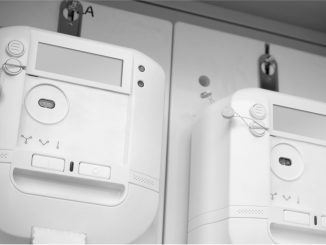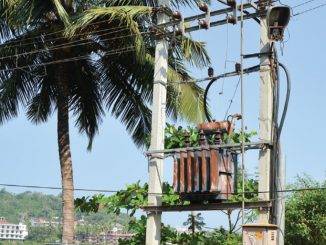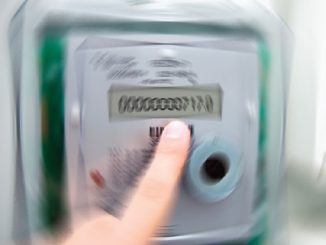Smart metering is crucial for the efficient distribution of power in India. Over the past decade, there have been targeted efforts to revamp the country’s metering infrastructure, with smart meters playing a pivotal role in this progress. The Ministry of Power launched a new programme, the Revamped Distribution Sector Scheme, which aims to roll out smart meters to 250 million customers by 2025, among other reforms for the beleaguered power distribution sector. Smart meters can improve the operational and financial performance of discoms by automatically generating bills, preventing delayed payments and reducing aggregate technical and commercial (AT&C) losses. As per the National Smart Grid Mission dashboard, accessed on February 12, 2023, over 5.4 million smart meters have been installed in the country.
Discoms are actively employing advanced metering infrastructure (AMI), which can detect electricity theft and component failure and help in remote disconnection and prepaid metering. This has significantly increased revenues and reduced AT&C losses.
All smart meters use technologies to constantly communicate with their respective discoms. Discoms prefer communication technologies that are self-healing, and have low operation and maintenance costs. Scalability and auto-reconfiguration post grid failure are also important criteria to select technologies that are suitable for the grid.
Despite various wired and non-wired technologies to choose from, no single solution has proven to be perfectly optimal so far. Many discoms design systems that use combinations of multiple communication technologies to achieve their goals.
Communication technologies for smart grids
Non-cellular technologies
Based on functionality and economic viability, some of the commonly deployed smart meter communication technologies at the end-user premises are power line communication (PLC), RF mesh and ZigBEE.
PLC: It is built on to existing power line installations to establish communication without laying dedicated cables. It is a simplistic and low-cost technology. However, it has some disadvantages as well. Attenuation can occur on certain frequencies due to random switching of electrical equipment. It is prone to strong noise interference posed by electrical equipment such as switched mode power supplies and inverters, and signal voltages can often be affected by load impedance variations. It often needs to be paired with other technologies for better results.
RF mesh: It enables wireless communication and is a core function of automatic meter reading (AMR). It is installed on to the meters. This enables the measurement of power consumption and collection of data from energy consumers. It is a low-cost and energy-efficient technology, and the modules are easy to embed into existing meters. However, it is better suited to restricted ranges with high concentrations of RF modules and it often faces signal interference from public frequencies. Pairing with PLC can help achieve better accuracy and coverage from both technologies.
Zigbee: It is similar to RF mesh as it can also be used to build a mesh network that can connect to smart meters with data concentrators. It is a machine-to-machine (M2M), wireless and IoT-based solution. It is a low-cost and simple solution for low-power smart metering that is also flexible in nature. However, it has a high interference ratio from applications using the same bandwidth. It has a limited support capacity, up to 65,000 devices. Zigbee is preferable for lighter use such as home automation or smart lighting unlike RF mesh, which is a more reliable alternative for industrial applications.
Power grid Corporation of India Limited is set to install 10 million PLC and RF mesh smart meters in the coming year. Lately, low-power wide area networking (LPWAN) has also become popular. Cellular IoT technologies are a part of LPWAN. They are incredibly flexible and available at extremely low prices. However, the choice of system is usually dictated by the need of the discom.
Cellular IoT technologies
Cellular IoT focuses on low-power cellular connectivity. Following the growth in 2G and 3G connectivity, long-term evolution (LTE) technology, also known as 4G LTE, rapidly spread across the world. Cellular IoT has eliminated the need for LTE to deploy its own infrastructure and it can now purely rely on the networks provided by mobile operators, which significantly reduces costs.
Long range: LoRa is a spread spectrum modulation technique derived from chirp spread spectrum technology. LoRa is a long-range, low-power wireless platform. LoRa devices and networks such as LoRaWAN enable smart IoT applications, which can be used for a variety of purposes such as pollution control, infrastructure efficiency, disaster prevention, and now communication in smart metering. However, they provide limited cellular connectivity.
Narrowband IoT (NB-IoT): It offers widespread cellular connectivity with a large number of partner networks. It costs less than any other M2M technology in the market and provides extensive global network coverage while being extremely reliable. It can be easily added to existing PLC/RF mesh infrastructure, which increases the reach of smart metering as manual meter reading in remote areas is no longer needed. The technology does not require concentrators or gateway devices and also offers data visualisation with unified dashboards.
LTE for machine type communication (LTE-M): It is another cellular IoT technology that has higher energy consumption than its competitors but also offers much higher data throughput and latency. It is being actively adopted by power distributors globally.
General packet radio service (GPRS): GPRS technology-based AMR is a secure and low-cost AMR system that calculates and transmits the total electrical energy consumption to the main server using GPRS technology provided by GSM networks. The AMR system consists of an accurate digital meter, a transmission facility and a billing server. It is a remote reading technique that has many advantages. It saves the expense of periodic trips to physical locations, and billing becomes more accurate with near real-time consumption rather than being based on estimates such as previous and predicted consumption values. When this is coupled with appropriate forecast analysis, it can help discoms and customers control the use and production of electricity. The state electricity department of Goa seeks to replace existing electronic meters with smart meters for over 740,000 consumers in a phased manner, of which 510,000 smart meters will be installed by 2023. These meters will use GPRS technology.
Outlook
India has been using PLC technology coupled with RF mesh for a long time, which has been beneficial for the country. However, with fast-evolving technology and the growing needs of the country, RF mesh, which is a 2G technology, is unlikely to be the ideal communication system.
Indian discoms and private players are actively employing a variety of communication technologies, which are largely based on cellular IoT. The number of active NB-IoT connections is now rising in India, leading to economies of scale as all leading manufacturers in India have integrated NB-IoT technology and launched NB-IoT-enabled meters.
For instance, Tata Power Delhi Distribution, which caters to 7 million people in North Delhi, has launched NB-IoT technology in smart meters, which is 4G and 5G compatible. Energy Efficiency Services Limited is also planning to install 3.33 million additional smart meters in Uttar Pradesh and Haryana which are IoT enabled. It has already installed 1.67 million IoT-enabled smart meters in the two states, against the target of 5 million IoT-enabled smart meters.
The choice of communication technology used depends on the discom’s needs, network strength, cost and throughput requirements. With India’s ambitious smart metering plan, communication technology will play a crucial role in its success. Efficient technology can help reduce expenses, increase revenues and improve the financial health of the discoms while also improving the state of the power sector in India.
Harshita Verma



